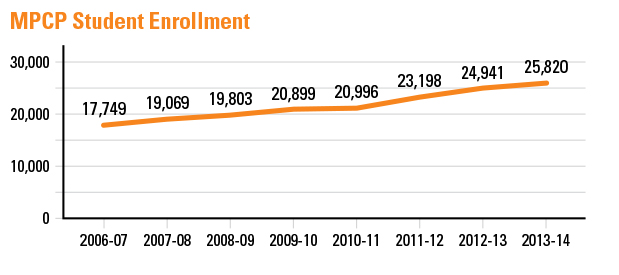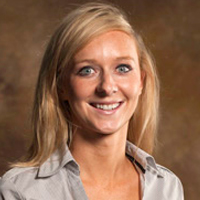How to Maximize Private School Supply in Choice Programs
At the International School Choice Research and Reform Academic Conference this month, researchers, practitioners, and advocates convened to compare and contrast the state of school choice in the U.S. and across many European and South American countries. One thing was clear — the conversation around school choice has shifted to implementation.
Private school choice programs are here to stay, so what steps should policymakers take to ensure they operate optimally? The promise of private school choice, in particular, relies upon having a steady supply of high-quality private schools that are willing to participate in such programs. In the short term, under-enrolled private schools can absorb increased demand. In the long term, however, policymakers would do well to think of innovative solutions that will entice new schools to enter the marketplace and encourage existing schools to scale up.
How can participating private schools appropriately prepare for teacher hiring, facility expansion, and textbook purchases, for example, if their perception of the demand for private seats by voucher/ tuition tax credit is clouded?
At least three school supply barriers need to be addressed to meet these goals.
The first barrier is deceiving in its simplicity — it’s the inefficient allocation of available private school seats.
Every year, private school choice program administrators are faced with the difficult task of allocating private school seats in a way that satisfies eligible student demand with the available supply of grade-appropriate spots in participating private schools. If this task is performed sub optimally, viable seats remain unfilled and eligible applicants find themselves turned away from the program. This kind of congestion in the student/school assignment process is certainly unfortunate for the students affected by this barrier, but it also has serious long-term implications for the private school market. How can participating private schools appropriately prepare for teacher hiring, facility expansion, and textbook purchases, for example, if their perception of the demand for private seats by voucher/ tuition tax credit is clouded?
The administrators of the Louisiana Scholarship Program avoid this interruption to the market signal by using a “Roth lottery” to assign voucher students to private schools. This multi-stage matching algorithm, designed by Nobel Prize laureate Alvin E. Roth in response to the waste of transplantable donor organs, ensures the maximum number of students is matched to open seats in private schools. Choice program administrators in other states would be smart to investigate if this matching technique can be adopted to improve their seat allocation process.
The second barrier to maximizing private school supply is accessing facilities.Charter schools’ woes in this regard tend to dominate the headlines, but private schools can face serious facilities barriers too. In certain cases, traditional public school districts are able to flex their monopoly advantage to prevent new private schools from establishing or existing private schools from expanding. Milwaukee, WI, home of the nation’s oldest school voucher program, provides an instructive example. In 2010, the Milwaukee Public School District (MPS) was spending over $1 million per year to maintain 27 empty buildings. Meanwhile, enrollment in the voucher program was continuing to expand annually by the hundreds.
Source: Student enrollment figures for 2006-07 through 2010-11 come from the SCDP Descriptive Report on Participating Schools. Figures for 2011-12 through 2013-14 from the Wisconsin Department of Public Instruction, MPCP Facts and Figures:
In an effort to accommodate more students, Superintendent of St. Marcus Lutheran School, Henry Tyson, attempted to purchase a vacant MPS building close to the school’s current campus in early 2013 but was denied by MPS. When the building eventually sold, a condition of sale prohibited the future use of the building for any purpose that would “diminish the annual average number of pupils enrolled in Milwaukee Public Schools.”
How can states and localities assist current and aspiring private school operators in accessing appropriate school facilities?
There are lots of examples of states intervening to ensure charters have access to empty school buildings or allocating grants for the construction and development of charter school facilities, perhaps it’s time to consider similar interventions with reference to private schools that accept choice program students.
The third barrier is a failure to think outside the box.
Choice programs are intended to give students new options, not just variations on the same theme. If new providers are expected to simply replicate the structure of existing public schools, innovation is limited. In order to accommodate hybrid offerings and unbundled courses, administrators will need to be flexible about configuring student schedules, coordinating multiple providers, and taking a piecemeal approach to reimbursement.
States overlook private school supply dynamics at their own peril—it’s not hard to imagine how a dearth of high-quality private school seats could derail even a politically popular, fiscally sound voucher or tuition tax-credit program, even one with demonstrated advantages for students’ short term test scores and, more importantly, long term attainment and labor market outcomes.
For more on choice program design and school supply, watch the AEI Event live (also featuring Friedman Foundation President and CEO Robert C. Enlow) today at 1: 15 p.m. EST.




